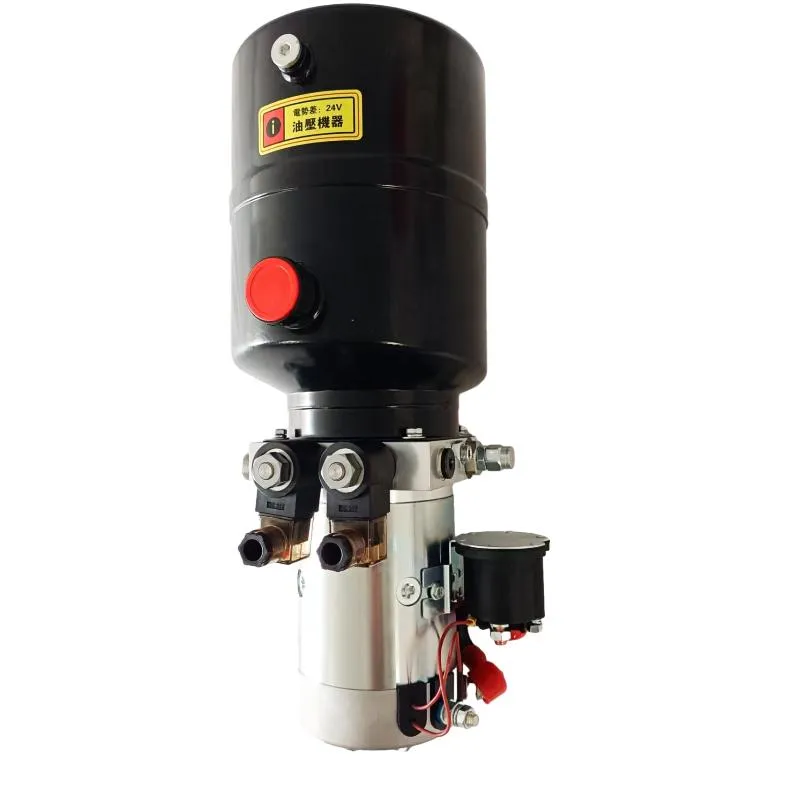Oct . 10, 2024 14:17 Back to list
tractor top link hydraulic cylinder products
Understanding Tractor Top Link Hydraulic Cylinders A Key Component for Agricultural Efficiency
In the realm of agricultural machinery, the tractor stands as an invaluable ally. Among its various components, the top link hydraulic cylinder plays a pivotal role, enabling precise control and adaptability. This article delves into the significance, functionality, and advantages of tractor top link hydraulic cylinders, shedding light on their essential contribution to modern farming practices.
What is a Top Link Hydraulic Cylinder?
The top link hydraulic cylinder is a component used in three-point hitch systems on tractors, which allows for the attachment and adjustment of implements. The hydraulic cylinder connects the tractor to the implement, allowing for vertical adjustments and angle modifications, which are crucial for optimal performance during various operations, such as plowing, cultivating, and planting.
Functionality and Operation
The primary function of the top link hydraulic cylinder is to facilitate the changing of the angle of the implement hitch. This is achieved through hydraulic pressure generated by the tractor’s hydraulic system. By adjusting the top link, operators can control the depth and angle at which implements interact with the ground. This is vital for achieving desired soil conditions, ensuring an even distribution of seeds, and maximizing the efficiency of the farming operation.
The operation of these hydraulic cylinders is straightforward. When the operator activates the hydraulic system, fluid is directed into the cylinder, either extending or retracting the ram. This action alters the length of the top link, thus changing the angle and position of the attached implement. Operators can make quick adjustments on the fly, which is crucial when dealing with varying soil conditions or terrain, enhancing overall productivity.
Benefits of Using Hydraulic Cylinders
1. Precision and Control The use of hydraulic systems provides unmatched precision when adjusting the implement’s position. This level of control helps farmers optimize performance, ensuring that each field is worked according to its specific needs.
tractor top link hydraulic cylinder products

2. Time Efficiency Manual adjustments can be time-consuming and labor-intensive. Hydraulic cylinders allow for rapid changes without the need for tools, enabling farmers to focus on their work rather than constantly getting on and off the tractor.
3. Versatility Hydraulic top link systems can be used with various implements, such as seeders, harrows, and mowers. This versatility means that a single tractor can efficiently handle multiple tasks throughout the farming season.
4. Increased Productivity By facilitating quick adjustments and providing greater control, hydraulic cylinders contribute to increased productivity. Farmers can cover more ground in less time while achieving better results.
5. Durability and Reliability Hydraulic cylinders are designed to withstand demanding agricultural conditions. They are built with robust materials that can endure regular wear and tear, making them a reliable component in the farming arsenal.
Maintenance and Care
To ensure the longevity and reliable performance of tractor top link hydraulic cylinders, regular maintenance is necessary. Operators should periodically check for leaks, inspect hydraulic fluid levels, and ensure that the connections and fittings are secure. Cleaning the cylinder and keeping it free from debris will also enhance its lifespan, ensuring it continues to operate efficiently throughout the agricultural season.
Conclusion
In conclusion, tractor top link hydraulic cylinders are essential for modern agriculture, providing precision, efficiency, and adaptability. As farmers face increasing demands for productivity and sustainability, understanding and utilizing these hydraulic systems will be crucial. By investing in quality top link hydraulic cylinders and adhering to proper maintenance practices, agricultural professionals can significantly enhance their efficiency and performance, ultimately contributing to a more productive farming operation.
-
Fork Lift Power Units - Hebei Shenghan | Efficiency, Reliability
NewsJul.13,2025
-
1.5-Ton Turbocharged Cylinder-Hebei Shenghan|Hydraulic Solution,Energy Efficiency
NewsJul.13,2025
-
Auto Hoist Power Units-Hebei Shenghan|Efficiency&Industrial Lifting
NewsJul.13,2025
-
Double Acting Power Units-Hebei Shenghan|Hydraulic Solutions,Industrial Efficiency
NewsJul.13,2025
-
1.5 Ton Lifting Cylinder 70/82-40-290-535 - High-Performance Hydraulic Solution | Hebei Shenghan
NewsJul.13,2025
-
Fork Lift Power Units - Hebei Shenghan | Efficiency&Reliability
NewsJul.13,2025
